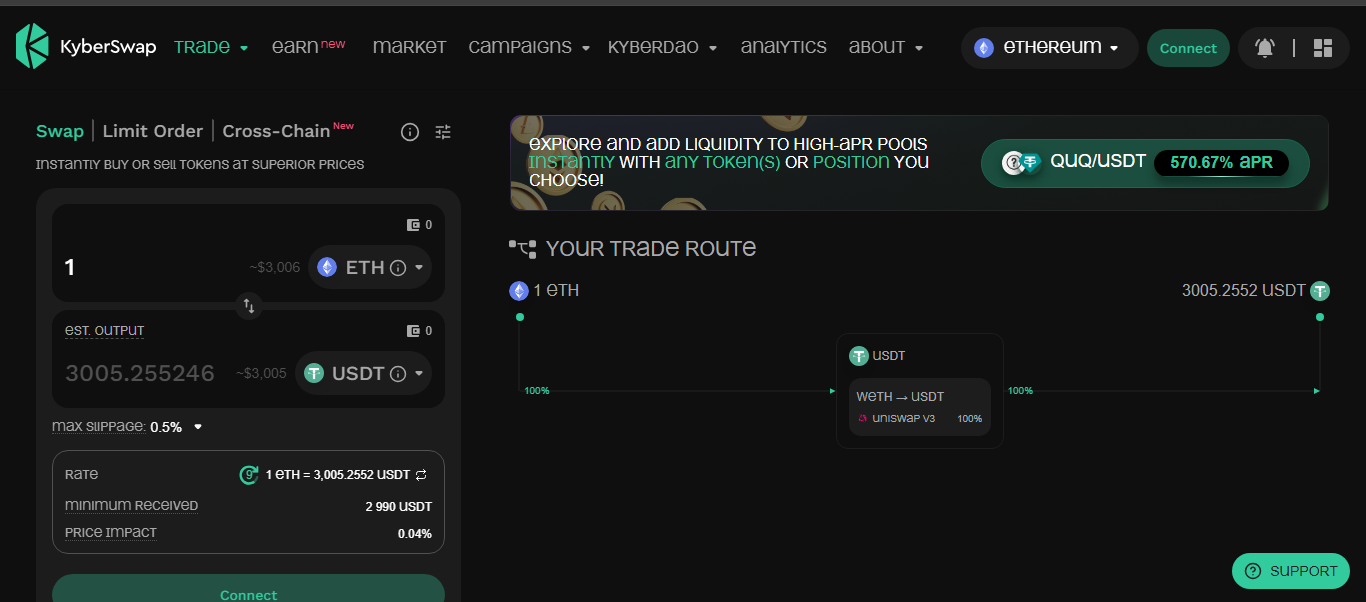KyberSwap Elastic (Polygon) Review

What it is
KyberSwap Elastic on Polygon launched in 2022 as a next-gen evolution of traditional AMMs. Unlike standard liquidity pools where capital spreads evenly, this model let providers pick exact price bands - so you could concentrate funds only where trades actually happen. That boosted fee potential and reduced wasted liquidity.
The auto-compounding mechanic meant fees earned were reinvested automatically, growing positions without manual restaking. For traders, the tighter capital focus often meant better depth and smaller slippage.
How it works
Liquidity providers choose ticks - precise price ranges - to deploy funds. As swaps occur, fees flow directly back into their position, increasing stake size. There’s also an Elastic Zap tool that simplifies adding liquidity by letting users deposit a single token, automatically splitting it under the hood. Everything is non-custodial and lives on-chain, connecting through wallets like MetaMask. While available on Polygon, Elastic also rolled out on Ethereum, Arbitrum, Optimism, Avalanche and other chains, expanding the reach of its range-based AMM.
Quick snapshot
This structure made it a niche but powerful tool for experienced LPs chasing higher efficiency than classic pool models.
Pros and cons
Pros
- Let LPs pick exact price bands, squeezing more from the same capital
- Auto-compounded fees meant balances grew without manual claims
- Elastic Zap made entering pools easier with single-token deposits
- Multichain rollout gave flexibility beyond just Polygon
Cons
- Trading volume was low, so even though tech was sharp, real activity stayed limited
- The November 2023 hack was a huge setback - roughly $56 million was taken, eroding user trust
- Pools are currently paused, so there’s no live earning or trading happening
- No fiat or margin, purely technical liquidity management for spot assets
Using it day to day
When it was active, experienced liquidity providers could connect a wallet, pick pairs, set custom ticks and start earning. Everything displayed on-chain, with transparent positions and fee reinvestment. Traders benefited from concentrated liquidity which often meant better fills around active price ranges. However it was never beginner-friendly - you needed to understand impermanent loss, range shifts and gas costs to use it well. After the hack, KyberSwap paused Elastic operations to secure funds and reevaluate protocols, leaving users waiting for a secure relaunch.
Final take
KyberSwap Elastic on Polygon was an impressive piece of DeFi tech that gave LPs control over where and how to deploy liquidity, with auto-compounding sweetening the yield. But it stayed a specialist’s tool - volumes on Polygon were modest, and then the big exploit stopped everything cold.
Right now, it’s more a technical case study than a place to park funds. If they fully restore operations with stronger audits and liquidity incentives, it could once again appeal to LPs who want to squeeze capital hard across narrow price bands. Until then, it’s best watched from the sidelines - a clever idea that needs trust rebuilt before it’s worth putting money in again.
Disclaimer
“This content is for informational purposes only and does not constitute financial advice. Please do your own research before investing.”
.png)







%203.svg)
%203.svg)




















